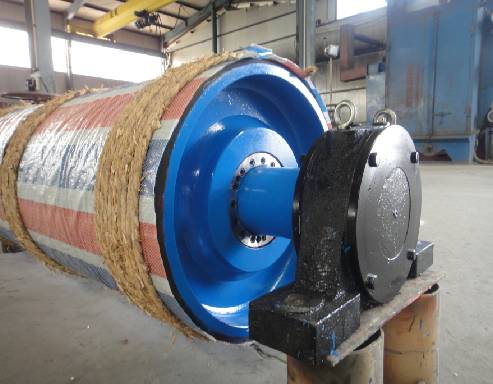 Afrikaans
Afrikaans  Albanian
Albanian  Amharic
Amharic  Arabic
Arabic  Armenian
Armenian  Azerbaijani
Azerbaijani  Basque
Basque  Belarusian
Belarusian  Bengali
Bengali  Bosnian
Bosnian  Bulgarian
Bulgarian  Catalan
Catalan  Cebuano
Cebuano  Corsican
Corsican  Croatian
Croatian  Czech
Czech  Danish
Danish  Dutch
Dutch  English
English  Esperanto
Esperanto  Estonian
Estonian  Finnish
Finnish  French
French  Frisian
Frisian  Galician
Galician  Georgian
Georgian  German
German  Greek
Greek  Gujarati
Gujarati  Haitian Creole
Haitian Creole  hausa
hausa  hawaiian
hawaiian  Hebrew
Hebrew  Hindi
Hindi  Miao
Miao  Hungarian
Hungarian  Icelandic
Icelandic  igbo
igbo  Indonesian
Indonesian  irish
irish  Italian
Italian  Japanese
Japanese  Javanese
Javanese  Kannada
Kannada  kazakh
kazakh  Khmer
Khmer  Rwandese
Rwandese  Korean
Korean  Kurdish
Kurdish  Kyrgyz
Kyrgyz  Lao
Lao  Latin
Latin  Latvian
Latvian  Lithuanian
Lithuanian  Luxembourgish
Luxembourgish  Macedonian
Macedonian  Malgashi
Malgashi  Malay
Malay  Malayalam
Malayalam  Maltese
Maltese  Maori
Maori  Marathi
Marathi  Mongolian
Mongolian  Myanmar
Myanmar  Nepali
Nepali  Norwegian
Norwegian  Norwegian
Norwegian  Occitan
Occitan  Pashto
Pashto  Persian
Persian  Polish
Polish  Portuguese
Portuguese  Punjabi
Punjabi  Romanian
Romanian  Russian
Russian  Samoan
Samoan  Scottish Gaelic
Scottish Gaelic  Serbian
Serbian  Sesotho
Sesotho  Shona
Shona  Sindhi
Sindhi  Sinhala
Sinhala  Slovak
Slovak  Slovenian
Slovenian  Somali
Somali  Spanish
Spanish  Sundanese
Sundanese  Swahili
Swahili  Swedish
Swedish  Tagalog
Tagalog  Tajik
Tajik  Tamil
Tamil  Tatar
Tatar  Telugu
Telugu  Thai
Thai  Turkish
Turkish  Turkmen
Turkmen  Ukrainian
Ukrainian  Urdu
Urdu  Uighur
Uighur  Uzbek
Uzbek  Vietnamese
Vietnamese  Welsh
Welsh  Bantu
Bantu  Yiddish
Yiddish  Yoruba
Yoruba  Zulu
Zulu Essential Parts and Functions of Conveyor Systems in Material Handling
Understanding Conveyor System Components
Conveyor systems play a vital role in the automation of material handling in various industries, including manufacturing, warehousing, and distribution. These systems are designed to efficiently transport materials from one location to another, significantly reducing manual labor and enhancing productivity. To understand how conveyor systems operate effectively, it is essential to recognize the crucial components that make up these systems.
1. Belts and Rollers The Backbone of Conveyors
At the heart of most conveyor systems is the belt or roller. Conveyor belts are typically made of durable materials such as rubber, fabric, or metal and are designed to transport goods. Their construction varies based on the specific requirements of the application, including the load being moved, the speed at which it needs to travel, and the environmental conditions.
Rollers are another vital component, particularly in roller conveyors. These cylindrical elements reduce friction and facilitate the movement of goods over the system. The type of rollers used can range from gravity rollers, which depend on the incline to move items, to powered rollers that are driven by motors to assist in the transfer of heavier loads.
2. Drives and Motors Powering the System
The drive mechanism is crucial for providing the necessary power to move the conveyor belt or rollers. Most systems use electric motors, which can either be mounted directly on the conveyor or connected via a drive shaft. The type of motor selected can greatly influence the efficiency, speed, and torque of the conveyor system.
Variable speed drives are often employed to provide greater flexibility, allowing operators to adjust the speed of the conveyor based on the material being handled or the operation speed of associated machinery. This adaptability is important in maintaining efficiency and avoiding bottlenecks.
3. Framework The Structural Support
The framework of a conveyor system provides the necessary structural support and rigidity needed to withstand the weight of materials being transported. The design of the framework can vary significantly, with options including modular aluminum profiles, steel frames, or heavy-duty welded structures.
conveyor system components

The choice of materials and design needs to be aligned with the intended application, ensuring stability and safety. A well-constructed framework not only supports the conveyor's load but also helps in minimizing vibrations and wear on components.
4. Control Systems Ensuring Coordination
Control systems are essential for the seamless operation of conveyor systems. They include sensors, controls, and software that manage the system’s functions. Sensors can detect the position and speed of materials, allowing for real-time adjustments.
Advanced control systems can integrate with other automation technologies, facilitating communication across various parts of a manufacturing or logistics chain. This integration is instrumental in optimizing operations, reducing errors, and enhancing overall efficiency.
5. Safety Features Protecting People and Equipment
Incorporating safety features is paramount in the design of conveyor systems. Emergency stop buttons, safety guards, and light curtains are essential components that prevent accidents during operation. These safety measures ensure that personnel can work around conveyor systems without exposure to undue risks.
Additionally, regular maintenance and inspections help to identify potential hazards, ensuring that all components function correctly and safely.
Conclusion
Conveyor systems are comprised of various components, each playing a critical role in ensuring smooth and efficient operation. Understanding these elements—the belts and rollers, drives and motors, framework, control systems, and safety features—allows businesses to optimize their material handling processes. As industries evolve, the development of conveyor technology continues to advance, promising even greater efficiency and safety in the future. Through careful selection and integration of these components, companies can enhance their productivity and maintain a competitive edge in the market.
-
Trusted Conveyor Solutions from Leading Conveyor Idler Roller ManufacturersNewsJun.27,2025
-
Reliable Return Idler Solutions for Efficient Belt Conveyor SystemsNewsJun.27,2025
-
Precision Conveyor Accessories for Streamlined Material HandlingNewsJun.27,2025
-
High-Quality Belt Conveyor Idler Solutions for Efficient Material HandlingNewsJun.27,2025
-
High-Performance Belt Conveyor Pulleys for Reliable Material HandlingNewsJun.27,2025
-
Enhancing Material Handling EfficiencyNewsJun.27,2025





























